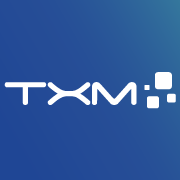Everybody in the telecommunications industry is talking about #5G one way or another, it promises to pave a new super-highway to first give relieve to all craving consumers demanding more bandwidth to satisfy their multimedia communications and social networking needs, but also to serve as a super-fast road for higher purposes in many fields like medical, industrial, metering, transportation and media applications such as augmented reality to inspect physical infrastructure on a building, remote surgery, asset tracking, traffic safety and control plus many machine-to-machine communications for industrial applications, it will also serve to avoid cable and network installations in buildings resulting in substantial cost reductions.
All telecommunications technology companies and equipment manufacturers as Ericsson and Nokia are working hard to take their slice of the cake that is scheduled to start operating between 2019 and 2020 at major markets including at least three Asian countries.
The promises:
- High data rates (in the order of gigabits per second),
- Low latency (milliseconds),
- High reliability,
- Support for many devices in small areas, and
- Low energy consumption.
According to IoT technology, it is expected that millions of devices (things) will be connected to the internet requiring not only bandwidth but capacity to allocate such a big number of end-points; a lot of these things will be performing machine-to-machine transactions, sending data and informing about events through a wireless network with enhanced coverage; a low power consumption and latency will be a must.
One of the challenges is to have small area cells and indoor coverage, because many IoT devices may end up placed indoors, on top of that studies show that the wireless data transmission indoors its continuously increasing, people are no longer switching to Wi-Fi and local wired networks when entering premises, so just imagine when they have 10X speed on their mobile devices.
Ericsson is already promoting a good solution that promises to be simple to deploy in ceilings of premises called “5G Radio Dot”.
One challenge I’ll mention (but I'll deep-dive into in another post), it's the use of the frequency spectrum, regulating bodies will need to find a good way to share it in the most effective way among all services.
One important thing to consider is that terminals and phones need to be ready to support 5G, it has been announced that main smart-phone manufacturers like ZTE, HTC, Sony, and LG will launch their first models on 2019, these phone manufacturers have made agreements to use the Qualcomm Snapdragon X50 5G NR modem to be part of their terminals (this modem will be included in laptops and tablets as well).
Of course, it won’t be enough to buy next year one of these terminals to enjoy the 5G benefits, it will be until your carrier has finished the technology deployment, but we are getting closer to it.
Carriers are selecting their providers and launching the deployment projects; in North America Verizon and in Europe Deutsche Telekom have already awarded the contract to Ericsson.
So, in few months we should expect to see major improvements in data communications and the realization of projects related to emerging technologies such as Machine Learning, Artificial Intelligence (AI), Block Chain, IoT, etc. Making use of the 5G network. A full technological revolution.
Thanks for reading this article.



